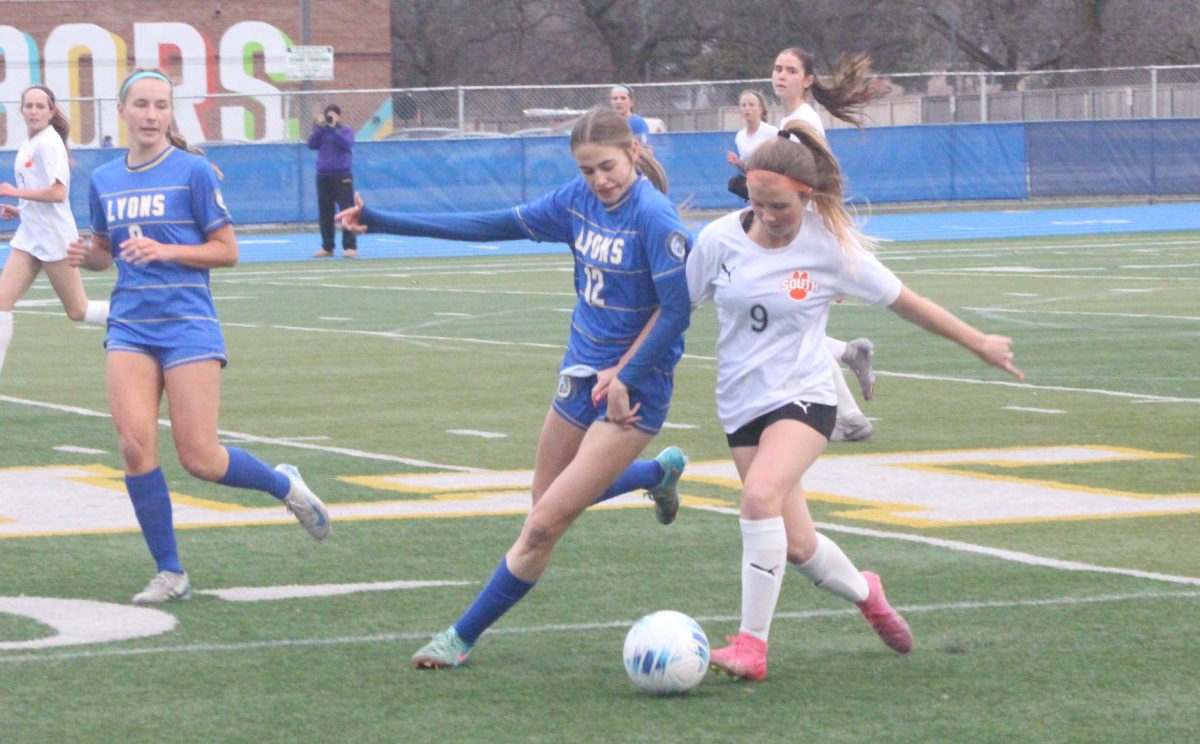Due to NC’s proximity to the heavily used Burlington Northern Santa Fe (BNSF) train tracks, train safety is at the forefront of administrators’ minds, Principal Jennifer Tyrrell said. While “See Tracks? Think Train” Week, a national program that raises awareness for train track safety, was Sept. 23-29, Tyrrell hopes this is something families and students are constantly thinking about.
“We want to bring awareness during that week, but these are things we hope our students and families are thinking about all the time,” Tyrrell said. “Rail safety is really important, and it’s something that we want to make sure we are keeping in front of our students and families, especially given where our high school is located in relation to the tracks. This is something that we’ve communicated about in the past but also something that we think about outside of any week that is designated to rail safety.”
In Tyrrell’s Principal update email sent out on Sept. 23, she shared that every three hours in the U.S., a vehicle or person is hit by a train, more than 2,300 people are injured or killed annually in railroad crossing and trespass incidents in North America, and more than 60% of collisions occur at crossings equipped with lights and/or gates. To educate our students on this matter, there is a slide on train track safety displayed on TV monitors around the school. Additionally, there is a unit in health class that informs students how to act around tracks.
“We get reports whenever there is an accident on the train line,” Class of 2025 Assistant Principal Adam Davis said. “We want to make sure that kids are crossing at the appropriate time and not trying to cross when the lights or gates are down. Not a ton of schools have tracks that close to them, so we are always cognizant and trying to make sure that we are bringing awareness because it is such an important safety issue.”
While student Sami Rabah ‘25 recognizes train track safety is important, he finds it frustrating that he’s been marked tardy due to waiting for a train.
“The train has made me late a couple of times because of random freight trains,” Rabah said. “Sometimes I’ll get to the door a second after the bell rings, and I’m marked tardy.”
While some students feel forced to race across the tracks to make it to their first period on time, Davis hopes students will act responsibly and not risk their safety.
“It’s never worth jeopardizing your safety to make sure that you don’t get that fifth tardy to get a detention,” Davis said. “[For example], whenever there’s a [Metra] train or a freight train, that gets stuck for 20-30 minutes, [or instances like that] we will grant out passes for those kids. It’s rare that it happens, but when it does, we definitely take that into account for kids.”
Due to minimal LT-provided parking spots, a large group of students park across the tracks, in addition to the students who regularly have to cross the tracks while commuting to school.
“We’re always talking about how to maximize student parking on campus,” Davis said. “Unfortunately, we’re landlocked in terms of what we have available to us. “There was talk, around 20 years ago, about looking into a garage for the lot, but it would have been crazy amounts of money, so it was never something that was put into place. We’ve also talked in the past about possibly paving over the grass patch next to the lot, but because the green space is so valuable, and that is something that PE teachers definitely don’t want to lose, we didn’t move forward with that idea. We always look to have more parking, but we just don’t have the spots available, unfortunately.”





















![Movie poster for '[Rec]" (2007).](https://www.lionnewspaper.com/wp-content/uploads/2023/04/rec-640x900.jpg)





